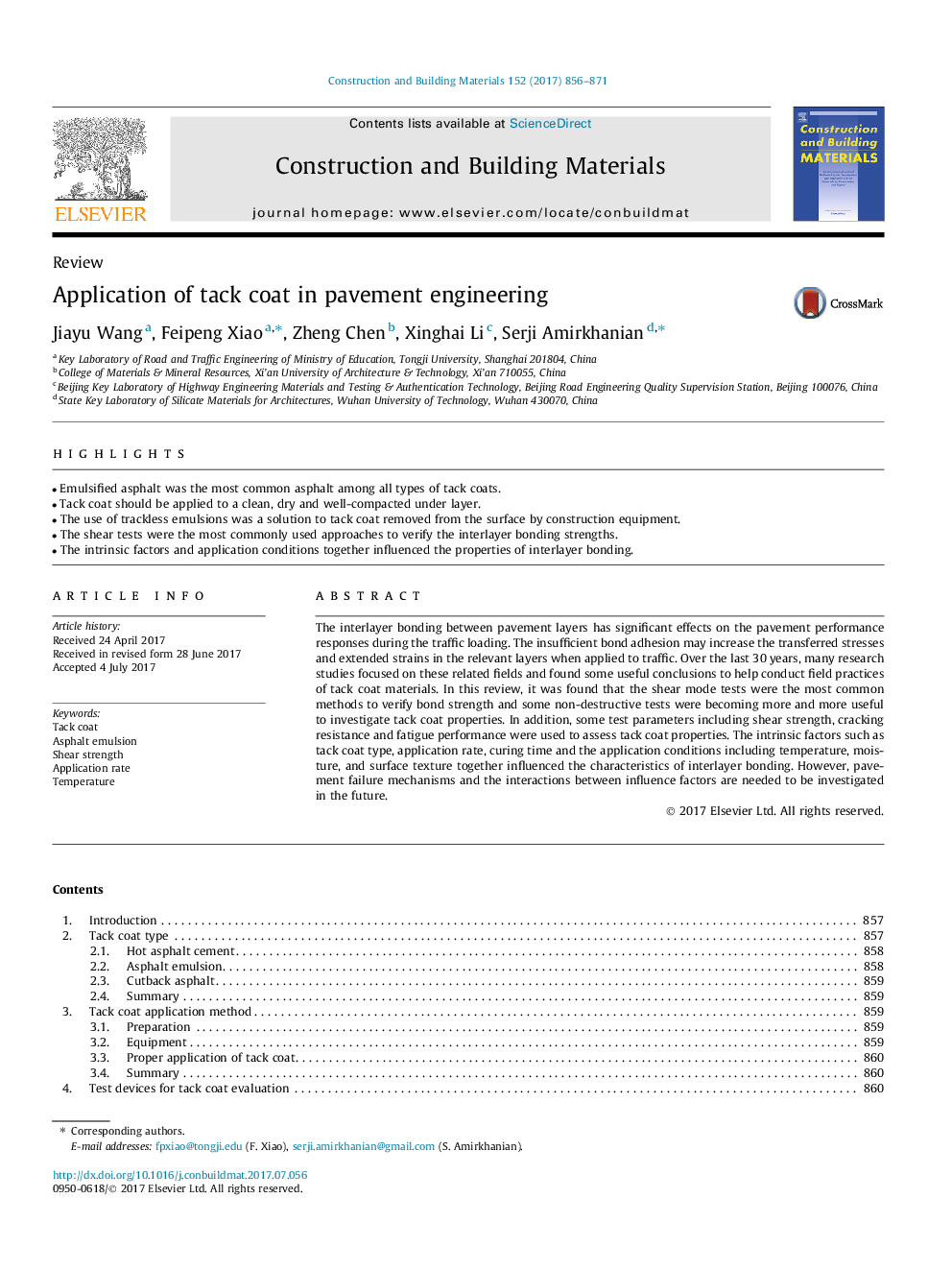| Article ID | Journal | Published Year | Pages | File Type |
|---|---|---|---|---|
| 4912743 | Construction and Building Materials | 2017 | 16 Pages |
Abstract
The interlayer bonding between pavement layers has significant effects on the pavement performance responses during the traffic loading. The insufficient bond adhesion may increase the transferred stresses and extended strains in the relevant layers when applied to traffic. Over the last 30Â years, many research studies focused on these related fields and found some useful conclusions to help conduct field practices of tack coat materials. In this review, it was found that the shear mode tests were the most common methods to verify bond strength and some non-destructive tests were becoming more and more useful to investigate tack coat properties. In addition, some test parameters including shear strength, cracking resistance and fatigue performance were used to assess tack coat properties. The intrinsic factors such as tack coat type, application rate, curing time and the application conditions including temperature, moisture, and surface texture together influenced the characteristics of interlayer bonding. However, pavement failure mechanisms and the interactions between influence factors are needed to be investigated in the future.
Related Topics
Physical Sciences and Engineering
Engineering
Civil and Structural Engineering
Authors
Jiayu Wang, Feipeng Xiao, Zheng Chen, Xinghai Li, Serji Amirkhanian,
